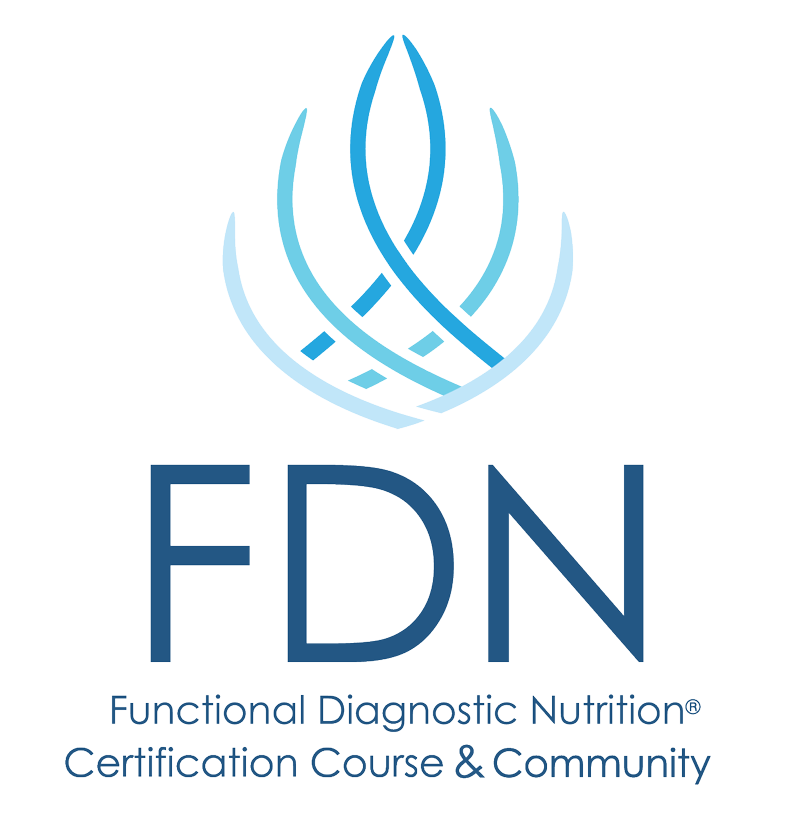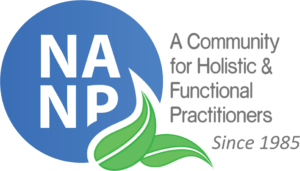Final Poster Session Abstracts
From the 2022 NANP Conference & Expo
Title: Dietary Considerations in Patients Undergoing Orthodontic Treatment
Authors: Bassam Butto, DDS student, UCLA School of Dentistry & Kathryn A. Atchison, DDS, MPH, UCLA School of Dentistry
Abstract: Orthodontic treatment utilizes the use of appliances and devices such as braces to provide a proper teeth alignment, correct bite problems, and improve the appearance of patients’ smiles. During the course of orthodontic treatment, patients are advised to follow certain dietary guidelines that facilitate the orthodontic treatment and help in maintaining good oral health. This literature review aims to present findings related to: 1) the association of adherence to dietary guidelines and the biological response of the periodontal ligament and bone to orthodontic forces, 2) how patients’ eating habits change during orthodontic treatment, and 3) the association between fixed orthodontic treatment and onset of eating disorders. Patients’ compliance is critical during orthodontic treatment. Orthodontists advise patients to avoid types of food that lead to bracket breakage, attachment debonding, and difficulty cleaning teeth. Food such as dried fruit, raw or crunchy vegetables, nuts, and seeds are not recommended to be consumed during the treatment. Also, chewing of meat leads to food getting stuck in the braces or between the teeth, making it more difficult to clean between the teeth. This results in plaque accumulation, ultimately increasing the risk of teeth decay. Moreover, eating meat off the bone, such as ribs or chicken wings, puts the patient at risk of breaking or dislodging the bracket. These dietary restrictions could impact nutritional intake, ultimately leading to the deficiency of necessary nutritional elements such as protein, iron, zinc, and vitamins. A literature review will be conducted to evaluate the association between orthodontic treatment and dietary restrictions and assess literature related to characteristics of the patients who had eating disorders.
Title: Low FODMAP Diet Improves Functional Gastrointestinal Symptoms in Ehlers-Danlos Syndrome Hypermobility Type
Author: Sharon L. Harrasser MS, ACHS Graduate, Thirteen Zebras
Abstract: Ehlers-Danlos Syndrome hypermobility research has well documented over the past decade the impacts functional GI symptoms have on this group of individuals with it accounting for a significant percentage of the general population. With still many unknowns for inherited connective tissue condition coupled with the lack of diagnostic criteria and general training in medicine leaves any form of nutritional therapy in its infancy. With this lack of evidence-based strategies low FODMAP diets were found to offer a therapeutic alternative to pharmacological treatments and aided in identifying foods that caused functional GI symptoms. The purpose of this study was to evaluate the role of low FODMAP diet in the functional GI symptoms in Ehlers-Danlos Syndrome hypermobility type through nutritional intervention.
Title: Holistic Treatments Alleviate Acne Vulgaris
Author: Brianna Leigh Vargas, Student American College of Healthcare Sciences
Abstract: Plato professed, “The cure of many diseases is unknown to physicians because they are ignorant of the whole. For the part can never be well unless the whole is well.” When the mind, body, and soul flourish and grow, this is holistic. Holistic treatments are the original medicine that has been used for thousands of years. Karimi and authors (2015) state, “Lifestyle, emotional, mental and spiritual considerations are part of any naturopathic approach.” Natural healing is when one takes control of their life and becomes responsible for everything that enters and leaves the mind, body, and spirit. Acne is a physically and emotionally debilitating prevalent complex skin disease affecting millions of people worldwide. Various topical medications or pills are given to the clients to treat acne regardless of the effects, yet supporting research proposes that holistic treatments can effectively improve acne. While commonly effective acne treatments are typically pharmaceutical medications, the current review of research indicates that holistic treatments efficaciously treat acne through herbal topical and edible methods as well as a lifestyle diet adjustment to a low-glycemic regimen.
Title: The Gut-Skin Connection: Using Gut Microbiome Tests to Treat Acne
Author: Dr. Julie Greenberg, ND, RH (AHG), MBA
Abstract: Acne is a chronic inflammatory skin disease that affects both adolescents and adults. While functional medicine acknowledges that there is a “gut-skin connection”, few studies have assessed the microbiome of acne patients. The objective was to analyze the microbiome of acne patients using functional medicine tests (stool and organic acid tests) to reveal if there are specific patterns of dysbiosis in acne, including but not limited to H. pylori, Candida and protozoa. Thirty-six of the most recent patients with an ICD10 diagnosis code of “acne vulgaris” or “acne unspecified” and who had performed functional medicine tests (stool test + organic acid test (OAT)) were selected from The Center for Integrative Dermatology patient database. Results were that 94% of patients had Candida elevated or high, 92% had H. pylori present and 53% had protozoa present. 47% of patients had all three conditions and 44% had at least two conditions. This research demonstrates that the gut microbiome of acne patients has higher levels of H. pylori, Candida and protozoa than the general population.
Title: Redefining Nourishment
Author: Tammera Karr, PhD, BCHN™, CNW® & Kathleen Bell, RN, MSN, CNM, AHN-BC™, Academic Affiliation: Pacific College of Health and Sciences; MSHHP, HN4U OnLine Education-Our Journey with Food Course, Integrative Healing Arts Program
Abstract: The purpose of this literature review is to expand the limitations of the common scientific definition of Nourishment to a broader holistic understanding relating to health. Is Nourishment limited to nutrients extracted through digestion? Or does Nourishment also include elements ingested from exposures to environment, culture, beliefs social, connections, wavelengths and smells as well as calories? To Nourish is to provide food or other substances necessary for growth, health and well-being. Well-being is a positive outcome that is meaningful for people and society. The reviewers demonstrate evidence that food alone is not sufficient to sustain human health and vitality.
Nutrients in food become information and control aspects of human biology and physiology, but Nourishment is not derived solely from food, Nourishment enters the body through multiple pathways. For example: Research shows that taste develops in the womb before birth as the fetus is introduced to foods the mother consumes. Fetal growth and development proceeds without the physical ingestion of foodstuffs; Nourishment is provided through the mother. Additional research illustrates health of both mother and child are affected by multi-faceted environmental, cultural, and biochemical factors.
Wellness can be viewed as an active process of becoming aware of (mindfulness) and making choices that support the dynamism required to maintain homeostasis. Holistic health and well-being are outcomes of constant interaction between and among many dimensions of human life. Balance is achieved via devoting significant attention to each of the interrelated elements that comprise Nourishment. Lack of attention to one or more of these elements results in imbalances that may lead to deterioration and disease. By redefining the concept of Nourishment the reviewers’ intention is to illuminate the deficiencies of remaining within the confines of a reductionist paradigm, and to highlight possibilities available in the quantum era for persons to develop and regenerate health.
Title: The Mitigating Effect of Selenium on Hashimoto’s Disease
Author: Christina Spencer, Nutrition Therapist, Ph.D. Student
Abstract: Hashimoto’s disease is a condition that currently affects 14 million people in the United States. Because Hashimoto’s disease is one of the predominant autoimmune conditions, it is imperative to look for options that can mitigate or stop this autoimmune disease activity. Currently, the main treatment option is taking thyroid hormones in a pill. However, the action of this drug most likely does not reduce the autoimmune attack on the thyroid gland. In current studies, researchers are using various forms of selenium supplementation in individuals who have Hashimoto’s thyroiditis. While different forms of selenium supplementation yielded varying results, most studies suggest that this supplement could be useful in lowering autoimmune activity that attacks and ultimately destroys the thyroid gland. The aim of this literature review was to evaluate current research and determine the efficacy of selenium supplementation as an appropriate form of treatment for individuals with Hashimoto’s thyroiditis.
 Title: The Effect of Suboptimal Maternal Prenatal Vitamin D on Child Motor Development
Title: The Effect of Suboptimal Maternal Prenatal Vitamin D on Child Motor Development
Author: Therese Aarseather, D.C. Ullevål Kiropraktorklinikk & Kirsten Ludwig, Ph.D., Kaiser Permanente Medical School
Abstract: Vitamin D deficiency is a world-wide problem affecting many people. Deficiency during pregnancy has been linked to a great variety of illnesses and adverse health outcomes for the mother, the fetus, and the child. Up to 50% of the female population and 50% of healthy new mothers have suboptimal vitamin D levels or vitamin D deficiency. The aim of this literature review was to investigate how suboptimal maternal vitamin D status during pregnancy may affect the growing infant and specifically child motor development. To better understand the possible role of vitamin D on child motor development, the biochemistry and role of vitamin D, and how it affects child brain development and its role in calcium homeostasis was also reviewed. The results indicate that motor development of the child may be impaired if the mother does not have sufficient vitamin D levels during pregnancy. Recent data indicate that there is a positive correlation between maternal serum levels of vitamin D below 50 nmol/L while pregnant and subsequent impaired motor development of the child. Early achievement of motor development milestones in the first few years of life has been indicated to be essential for cognitive performance later in life, thus impaired motor development at an early stage may have a long-term impact negative impact on cognition. It also appears that any negative effects on the motor development of infants born to mothers with suboptimal vitamin D status during pregnancy may be remedied by sufficient vitamin D intake and sun exposure after birth. It may be advisable to reassess the guidelines concerning the dosage of vitamin D supplementation, as the current recommendations of up to 4000 IU/d (100 μg/d) during pregnancy which may not be sufficient to rectify an existing vitamin D deficiency or to maintain optimal vitamin D status throughout pregnancy of >75 nmol/L.
Title: Inhalation of the Essential Oil of Rosemary Improves Short-Term Memory
Author: Marya Latson, Hill College Student
Abstract: wellnesszone4me@gmail.com
Abstract: Memory retention is a serious concern for many seniors and others affected by different maladies including Covid19. An effective, easily acquired, non-toxic, inexpensive remedy was researched. To address the problem, the aromatic herb rosemary was evaluated because it is historically known as a memory enhancer. Previous clinical studies, have determined that one of the essential oils in rosemary, 1,8-cineole, was proven to enhance cognitive function and memory in adults. An experimental study was conducted to test the effectiveness of rosemary’s essential oil on the short-term memory of adults. If substantiated to be effective, then it would be an excellent treatment because the oils are readily available and do not require a prescription. Three male and five female participants from 27 to 80 years of age with education levels ranging from high school to Master’s degrees were asked to self-evaluate their memories before doing the memory test. They were to memorize as many of the 15 written words and/or numbers on paper before recording them on an answer sheet. This test was conducted first in the open air outside and then again 10 minutes later with a different set of 15 written words and numbers inside a room where rosemary essential oil was being diffused. The hypothesis was that the memories of each individual should improve under the influence of rosemary because of the 1,8-cineole oil. The results indicated that every participant’s memory improved after inhaling the rosemary regardless of age or education.
Title: Attention Deficit Hyperactivity Disorder – New Understanding & Alternative Solutions
Author: Mary M. Ernsberger, MS, M.Ed.
Abstract: Attention deficit-hyperactivity disorder (ADHD) is the most frequently diagnosed childhood neurobehavioral disorder. The American Psychiatric Association (APA) reports that approximately 5% of the general population have this disorder, however, in many states more than 10% of children aged four to seventeen have been labeled with this disorder. The most common methods of treatment are a variety of pharmaceutical medications and/or behavioral therapy without any real effort made to determine the underlying cause of the unwanted behaviors. In most cases, no thought is given to the exploration of alternative solutions that could potentially eliminate the behaviors without pharmaceutical intervention. Recent studies have shown a connection between the amount of artificial flavorings, colorings, and ingredients, in addition to nutritional deficiencies, pesticide residues, delayed food allergies, and food sensitivities as potential causes of the behaviors used to diagnose this disorder. Studies conducted in some European countries were used to ban the use of certain artificial colorings in any foods advertised for children. This paper will explore the most recent literature on potential causes of the unwanted behaviors as well as a variety of alternative therapy solutions available to control them, thereby reducing or eliminating the need for the use of dangerous psychotropic medications for the treatment of Attention Deficit Hyperactivity Disorder.
Title: Natural Hair Loss Solution: A Healthy Microbiome
Author: Julie Olson, BSc, BCHN, CN, CGP
720-580-2078
Fortitude Functional Nutrition
https://fortitudefunctionalnutrition.com
Abstract: Female hair loss affects approximately 50% of women by the age 50 and management can be challenging, frustrating and devastating. Alopecia is the main term for autoimmune hair loss among different types including areata, androgenetic, and universalis. With over 30 known causes of hair loss – nutrient deficiencies, hormonal imbalances and inflammation rank as the top three. Studies confirm a healthy microbiome is vital for healthy hair, even for cases of alopecia. Hair is built from nutrients the body can efficiently digest and absorb and autoimmune hair loss can be a result of unresolved, chronic inflammation. Autoimmune diseases including alopecia have a common link to gut health. An imbalanced gut microbiome starts the process of permeability leading to leaky gut, a compromised gut barrier that facilitates inflammation. Chronic inflammation is a trigger, yet leaky gut itself creates inflammation. This bi-directional relationship is central to understanding the role that leaky gut plays in the onset of autoimmunity, hence chronic inflammatory diseases. The loss of immune privilege that leads to the autoimmune attack of the hair follicles, is considered a predominant cause of alopecia. This phenomenon has led researchers to describe alopecia hair follicles as “leaky”. Dysbiosis, inflammation, and immune dysregulation that begin in the gut do not stay in the gut, the effects are systemic. There is a known association between gut dysbiosis, inflammatory bowel disease, and hair loss. In 4 published clinical trials, where men and women with alopecia received a fecal transplant, all were able to regrow hair afterwards proving that a healthy microbiome plays a major role in hair growth and reversal of hair loss. Given how much the gut and our immune system collaborate and overlap, the presence of immune system dysregulation and autoimmunity means that we need to take a closer look at the gut and investigate the root causes that have led to dysbiosis, nutrient deficiencies, hormonal imbalances, inflammation and inevitably hair loss.
Title: Critical Window of Microbiome Development and Implications for Future Well-being
Author: Carla Abate
Abstract: More than any other period, the perinatal period appears to offer the most significant window of opportunity for modification of future disease risk. This is due to the transfer and development of the microbiome during this specific time frame. The purpose of this review is to help prospective mothers understand the correlation between early microbial disturbances and chronic diseases developed in both childhood and adulthood. In addition, evaluation of the factors involved in microbiome modification will be addressed, along with exploration of the potential to shift this microbial environment toward greater balance and optimal health. Some of the key modifiers that will be addressed include birth mode and antibiotic exposure, feeding method, diet, and other lifestyle factors.
Our Partners

What Members Are Saying
"Not only does NANP support us as Nutrition Professionals as a whole, but the community and resources that we can use in our day to day business are all there for us in one place."
~ NANP member











